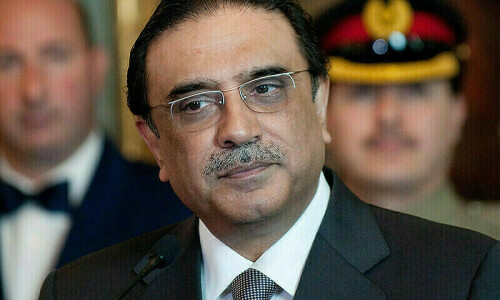DELAYING mayoral elections on court orders may be a passing hurdle facing the installation of local government (LG) in Sindh. However, there are plenty of other issues that need to be addressed in order to enable this very important tier of public administration to perform its statutory functions: promote good governance, effective delivery of services, and transparent decision-making through public representatives at local levels. Given the benefit of hindsight, one can identify at least three structural problems that plague LG in Sindh.
First is the lack of a complementary relationship between local and provincial governments, especially in an already adversarial environment. Such a relationship is not premised on the benevolence of a provincial government but is embedded in the Constitution, which ordains the devolution of political, administrative, and financial responsibilities and authorities to the elected representatives of LGs. The Sindh Local Government Act 2013 (SLGA), for all its shortcomings, also provides mechanisms to regulate ties between the two governments.
For instance, provided there is sincerity, the Provincial Finance Commission can construct a workable formula for resource distribution between the two governments. The political environment may also favour such an arrangement as the main contenders, PPP and MQM, are not in a position to drag their feet. The PPP government would like MQM to be its partner; at least in Karachi, where it is feeling the pinch of federal forces and accountability agencies. Likewise, MQM is out of the government, and its ability to leverage street power for political bargaining is now limited given the Rangers’ relentless operations in the city.
LGs cannot improve unless cured of corruption.
Secondly, LGs may never optimise their performance unless they are institutionally cured of the ills of corruption and poor governance. SLGA provides for a watchdog: the Provincial Local Government Commission. It is a powerful body; capable of, given the circumstances, recommending the suspension of an errant mayor or chairman to the chief minister. However, its composition and controls are such that the provincial government can influence it. This is why a similar commission failed to deliver during the Musharraf-led LGs in Sindh; while a bureaucratic-political clique indulged in wrongdoings, the provincial government remained oblivious.
Finally, LG functionaries need an enabling environment to render their duties in accordance with rules and defy any illegal dictates from their political masters. In fact, the LG service needs streamlining. Presently, LGs are manned by three varied groups ie civil servants, KMC employees and council employees. Each group is governed under different service rules. Moreover, PPP and MQM, among others, have employed thousands of card-holding members in local/city governments, creating a redundancy issue, which is crippling the finances and smooth functionality of LGs. It is not uncommon to witness these ‘loyal’ officials serving varied political interests rather than the public’s interests; they must be weeded out.
Besides structural problems, LGs have also suffered from bad policies and bad leadership. Take Gen Musharraf’s LG in Sindh; he adopted a duplicitous approach to service narrow interests.
His policy for the interior of Sindh was to strengthen district nazims, even at the cost of good governance and social development. Thus, district bureaucracy reported directly to the nazims; billions of rupees were placed at their disposal in the name of development funds, while the district accounts were never effectively audited. No wonder then, that the rural populace saw little improvement in their lot, while a new breed of rent-seeking millionaires emerged from the small towns and cities.
In contrast, the city government brought a boon to the metropolis, thanks to a combination of sound policies, able leadership, adequate funding, and — more importantly — a competitive political milieu. The city saw its commercial markets and real estate touch new heights, attracting hordes of ‘economic settlers’ to its sprawling shantytowns.
Thankfully, Karachi’s political environment continues to grow more competitive, especially with the entry of PTI and Pak Sarzameen Party. The old parties — MQM, PPP and ANP — may have to work extra hard to retain their old turfs. Moreover, Rangers and police have also done a good job, not only by restoring a measure of security for investment to flourish, but by also providing a level playing field for all political actors. The media’s role as whistleblower and opinion-maker is no less significant for good governance in the city.
What remains worrisome are the prospects for the local government to make a significant mark in rural areas. In fact, policies and styles of governance there are less likely to change for the better. PPP continues to hold the ground unchallenged, and much of the old rent-seeking elite have returned into their fold, under the PPP’s umbrella. Alas, history is set to repeat itself.
The writer is a lawyer and academic.
Published in Dawn, May 22nd, 2016










































